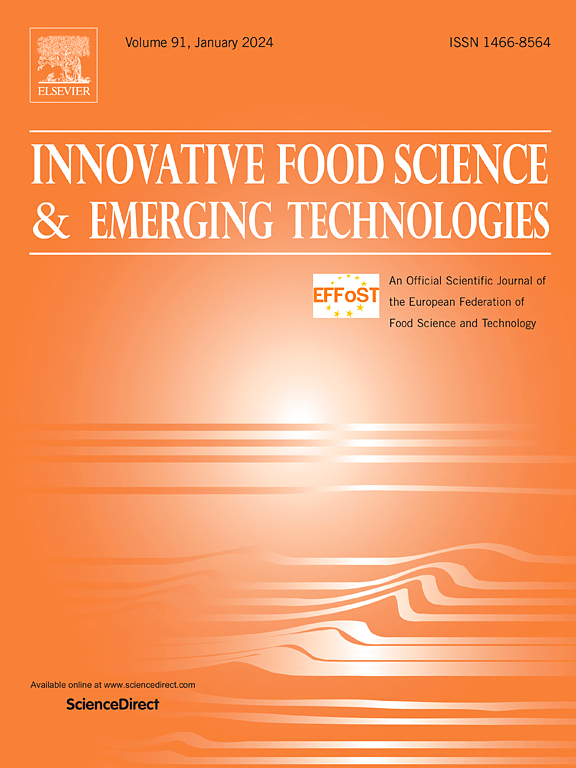Evaluation of thermal death kinetic models of Salmonella Typhimurium ATCC 14028 and application for radio frequency pasteurization of shell eggs
IF 6.3
1区 农林科学
Q1 FOOD SCIENCE & TECHNOLOGY
Innovative Food Science & Emerging Technologies
Pub Date : 2024-12-10
DOI:10.1016/j.ifset.2024.103898
引用次数: 0
Abstract
A thermal death time test heating block system (TDT-HBS) was employed to rapidly assess the thermal inactivation kinetic model parameters of S. typhimurium ATCC 14028. Subsequently, a radio frequency system was applied for pasteurization of S. typhimurium ATCC 14028 in shell eggs. The TDT-HBS treatment indicated that thermal inactivation kinetic models of S. typhimurium ATCC 14028 fitted the Weibull model well. Based on the model, it was estimated that a 5-log reduction should maintain temperatures at 54 °C for 442.5 min, 55 °C for 45.6 min, 56 °C for 33.2 min, 57 °C for 16.5 min, and 58 °C for 11.0 min, respectively. RF pasteurization protocol was developed by using an electrode gap of 9.0 cm, holding at 57 °C for 16.5 min, and finally achieved 4.95 ± 0.53 log reductions. Egg main quality had no significant (p > 0.05) difference after RF pasteurization. RF treatment holds potential as a novel pasteurization method to control Salmonella spp. in eggs.
Industry relevance
Most commercial eggs are unpasteurized in the worldwide during production, transportation, and consumption. The latest Salmonella spp. infection linked to Milo's Poultry Farms recalled eggs was identified by the Department of Health Services (DHS) on September 6, 2024. The general hot water immersion pasteurization process for in-shell eggs usually takes almost 60 min at 57 °C, that adds cost to the product and can damage the quality of eggs. The volumetric heating process induced by RF energy provides an alternative to inactivating Salmonella cells both surface and inside of the eggs and has minor effects on the main quality of eggs. RF protocol is a novel option as an effective pasteurization technology for the egg industry to provide high quality and safety eggs.
求助全文
约1分钟内获得全文
求助全文
来源期刊
CiteScore
12.00
自引率
6.10%
发文量
259
审稿时长
25 days
期刊介绍:
Innovative Food Science and Emerging Technologies (IFSET) aims to provide the highest quality original contributions and few, mainly upon invitation, reviews on and highly innovative developments in food science and emerging food process technologies. The significance of the results either for the science community or for industrial R&D groups must be specified. Papers submitted must be of highest scientific quality and only those advancing current scientific knowledge and understanding or with technical relevance will be considered.

 求助内容:
求助内容: 应助结果提醒方式:
应助结果提醒方式:


